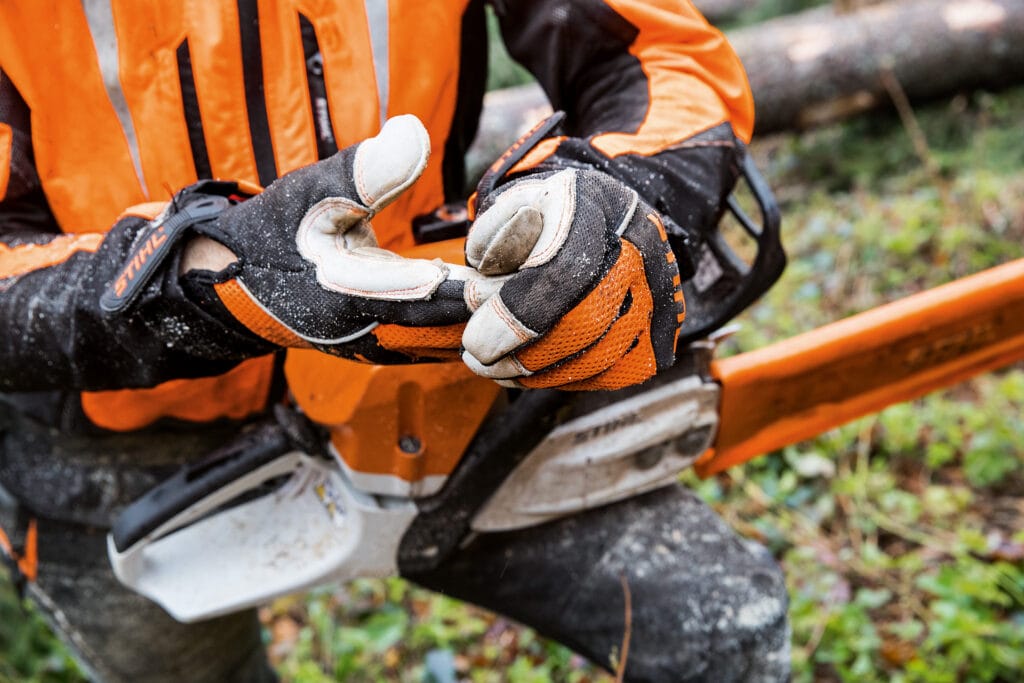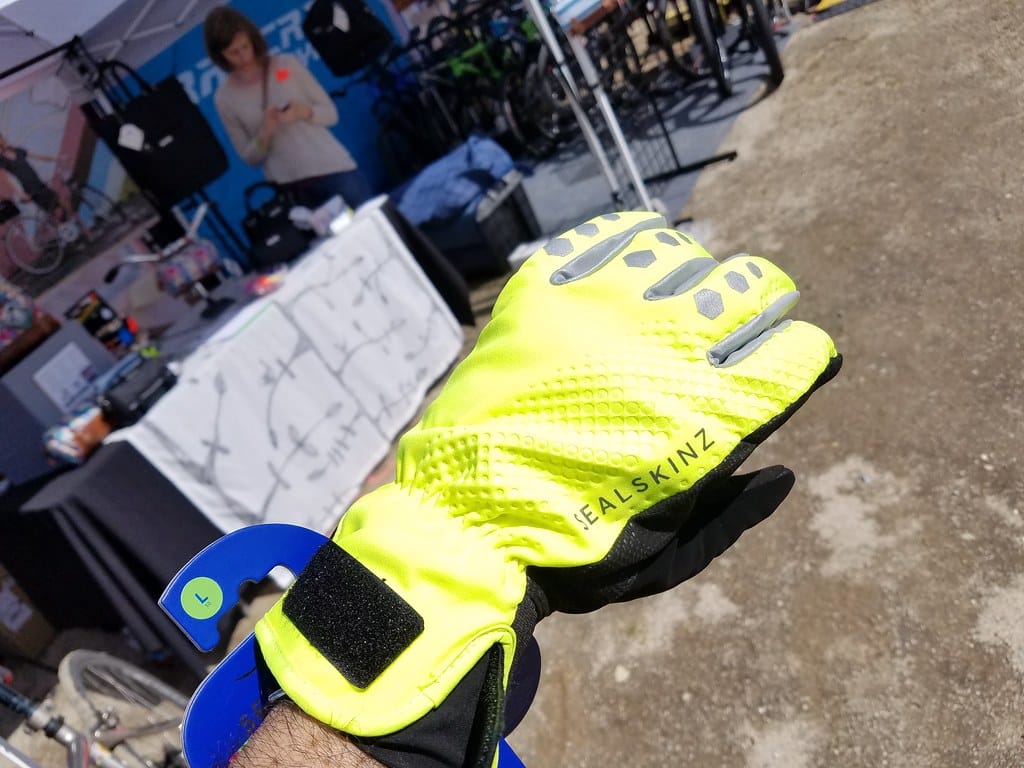
Layering 101: Base, Mid, Shell—Building a Flexible Cold-Weather System
In cold environments, no single garment can do it all. The smartest solution? Layering.
It allows your crew to adapt quickly as temperature, wind, and activity levels shift throughout the day. But effective layering isn’t random—it’s strategic.
Let’s break down exactly how to build an efficient three-layer system (base, mid, shell) that keeps workers comfortable and productive—without overheating, sweating, or shivering.
Layering protects against cold by combining:
- Base layers that wick sweat away from skin
- Mid-layers that provide insulation
- Shell layers that block wind and rain
This flexible system allows easy adjustments on-the-job, making it ideal for changing outdoor conditions.
Layer 1: The Base Layer (Moisture Management)
Your base layer directly contacts skin—it must wick away sweat to keep workers dry.
Ideal Fabrics:
- Merino Wool: Natural fiber; excellent moisture-wicking; retains warmth even when damp.
- Synthetic (Polyester/Polypropylene): Fast drying; lightweight; less expensive than wool.
Buyer Tip:
- Avoid cotton—it absorbs moisture (holds 7× its weight), making workers cold and uncomfortable quickly.
| Base Layer Type | Recommended Use | Ideal GSM | CLO Rating |
|---|---|---|---|
| Merino wool | Moderate to extreme cold | 150–250 | 0.3–0.5 |
| Synthetic blend | Mild to moderate conditions | 100–200 | 0.2–0.4 |
Real-Life Example:
A construction firm in Norway switched from cotton to merino wool base layers, reducing worker complaints about cold and dampness by 60% in one winter season.
Layer 2: The Mid Layer (Thermal Insulation)
This is your insulating barrier—trapping heat close to the body.
Ideal Fabrics:
- Fleece (Polyester): Lightweight, breathable; retains heat even if damp.
- PrimaLoft® or Thinsulate™: Synthetic insulation; high warmth-to-weight; good wet performance.
- Down: Excellent warmth-to-weight ratio; best for dry environments.
Buyer Insight:
- For wet environments or intense physical activity, choose synthetic insulation to avoid heat loss when damp.
| Mid Layer Type | Recommended Use | GSM Range | CLO Rating |
|---|---|---|---|
| Light fleece | Mild conditions; high activity | 150–250 | 0.4–0.6 |
| Heavy fleece | Moderate cold | 300–400 | 0.8–1.2 |
| Synthetic (PrimaLoft®) | Moderate to severe cold | 200–300 | 1.0–1.5 |
| Down jacket | Severe dry cold | 200–400 | 1.5–2.0 |
Client FAQ:
“Can we skip mid layers if our outer jacket is heavily insulated?”
A: No—mid-layers provide critical flexibility, letting workers shed layers as they warm up.
Layer 3: The Shell Layer (Wind & Water Protection)
The outer shell layer blocks wind, rain, and snow—maintaining the insulation beneath.
Ideal Shell Features:
- Waterproofness: ≥10,000 mm Hydrostatic Head
- Windproof construction: Blocks cold air penetration
- Breathability: Look for MVTR ≥ 8,000 g/m²/day to release sweat
- Durability: Heavy-duty fabrics (e.g., Cordura®) for abrasive tasks
- Adjustable Features: Hood, cuffs, waist adjustments to seal out elements
Shell Fabric Comparison:
| Shell Type | Advantages | Limitations |
|---|---|---|
| ePTFE (Gore-Tex®) | Exceptional breathability & waterproofing | High cost |
| PU-coated | Affordable, waterproof | Lower breathability |
| TPU-coated | Good waterproof, breathability balance | Mid-range cost |
Real-World Success:
A drilling company in Canada upgraded to Gore-Tex® shells with pit-zips, dramatically cutting downtime due to wet clothing—improving productivity by 20% in wet winter conditions.
Layering for Specific Conditions (Examples):
Moderate Activity, –5°C to 0°C:
- Base: 150 g synthetic
- Mid: 200 g fleece
- Shell: Lightweight, breathable PU-coated jacket (8,000 mm HH)
High Activity, –10°C to –5°C:
- Base: 200 g merino wool
- Mid: 250 g synthetic insulation vest
- Shell: Gore-Tex® or TPU shell (15,000 mm HH; 10,000 MVTR)
Low Activity, –20°C and colder:
- Base: 250 g merino wool
- Mid: 400 g synthetic insulation jacket
- Shell: Durable ePTFE jacket, fully sealed (20,000 mm HH)
Procurement Checklist:
- [ ] Assess activity level: low, moderate, high
- [ ] Match layer system to the coldest anticipated temperatures
- [ ] Request breathable, waterproof fabric specs from suppliers
- [ ] Conduct employee wear trials in actual conditions
- [ ] Check garment compatibility (layer fit & movement)
- [ ] Budget for flexible, adjustable gear for varying conditions
Buyer FAQs (Addressed Clearly):
Q: How do I balance breathability and waterproofness?
A: Prioritize breathability (MVTR ≥10,000 g) for active tasks; higher waterproofness (≥15,000 mm HH) for static tasks or heavy rain/snow exposure.Q: Can workers wear personal clothing as a mid-layer?
A: Not recommended. Standardized layers ensure consistent safety and thermal performance.Q: Can layering reduce PPE cost?
A: Yes—layering can extend garment life, reduce washing frequency, and minimize costly over-specification.
Conclusion:
Effective layering combines base layers (moisture control), mid layers (warmth), and shells (elemental protection), providing maximum adaptability, efficiency, and safety. Matching your gear precisely to site conditions ensures worker comfort, regulatory compliance, and long-term cost savings.
Need help building the right layered clothing system for your team?
Email: [email protected]
Website: www.workwearsolutions.net
Zion Zhang
Recent Posts
 The Peruvian Entrepreneur Who Turned PPE Into a Family Business2025年10月31日Starting Point: A Small Shop Run by a Couple In the […]
The Peruvian Entrepreneur Who Turned PPE Into a Family Business2025年10月31日Starting Point: A Small Shop Run by a Couple In the […] How a Kazakhstani Trader Won a Government Contract for Mining Workwear2025年10月30日In Kazakhstan’s booming mining industry, one small trader […]
How a Kazakhstani Trader Won a Government Contract for Mining Workwear2025年10月30日In Kazakhstan’s booming mining industry, one small trader […] A South African Retailer’s Journey from Importing Shoes to Supplying Full PPE Kits2025年10月30日In South Africa’s rapidly growing industrial supply market, […]
A South African Retailer’s Journey from Importing Shoes to Supplying Full PPE Kits2025年10月30日In South Africa’s rapidly growing industrial supply market, […] How a Jordanian Contractor Built His Own Workwear Brand for Construction Projects2025年10月30日Introduction In the competitive world of construction, […]
How a Jordanian Contractor Built His Own Workwear Brand for Construction Projects2025年10月30日Introduction In the competitive world of construction, […] The Nigerian Agent Who Lost $50,000 on Fake Certificates — Then Came Back Stronger2025年10月20日Introduction In the global trade of PPE and industrial […]
The Nigerian Agent Who Lost $50,000 on Fake Certificates — Then Came Back Stronger2025年10月20日Introduction In the global trade of PPE and industrial […] How a Brazilian Trader Used $5,000 to Break into the PPE Market2025年10月20日Introduction In a world where industrial safety and […]
How a Brazilian Trader Used $5,000 to Break into the PPE Market2025年10月20日Introduction In a world where industrial safety and […]
CONTACT US
- Feel free to contact us any time. We will get back to you as soon as we can!
- +86-17330061805
